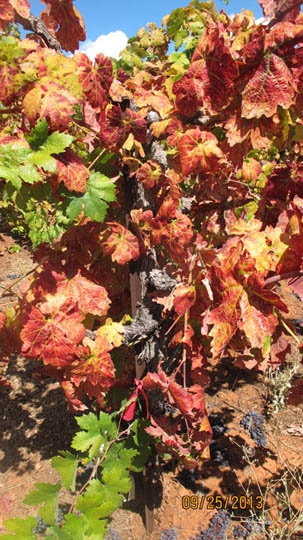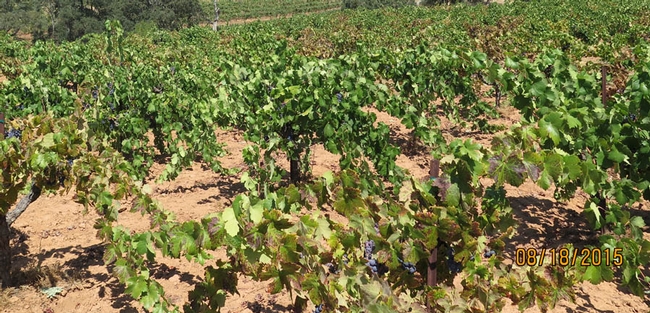
Hello Fodder Followers! My "Bahder Discovers Red Blotch Vector!" post has received over 1600 hits to date-a testament to how critical this disease and research finding is to the grape industry.
First, just in case I need to (do I?), let me say this: no one in science works in a vacuum. Research is ALWAYS a collaborative effort, and every person involved, from grower-collaborator to first author, plays a role. And sometimes, Extension works! and plays a small but critical role in scientific inquiry.
So it started as it often does for us UC Cooperative Extension Farm Advisors: a bag arrives with a grower name, a phone number, and a short message "Can you help me identify this problem?"
In this case the route was circuitous: the grower attended a meeting where I made a Red Blotch presentation. I have worked with Sudhi Sudarshana (USDA virologist) since 2013, collecting photos of the disease on many grape varieties grown in the foothills. As most of you know, over 50 grape varieties are grown here, in a range of soils and 
My presentation made this grower think about some red leaf symptoms in his own vineyard. He had been told that the red leaf was due to potassium (K) deficiency and so he had made applications of K for the past couple of years. Yet, the red leaf continued and appeared to be spreading. So off to the UCCE office he went to drop off a bag of red leaves with a note.

Certainly Brian would likely have made his findings without this site: the team was already hot on the trail before I came along. I did not know about Brian's transmission test results before the webinar, though I knew he had narrowed the vector candidates. So when I watched his presentation I felt pride and excitement for him and for the team.
Diagnosing problems is a critical and sometimes undervalued role for us UCCE Farm Advisors. We are the "boots on the ground" for our colleagues on campus and most of us love this aspect of our work. But few realize the number of hours that can go into a single farm call. Most often the reward is a grower's gratitude (which is enough!), and sometimes, it's a little bit more. 


